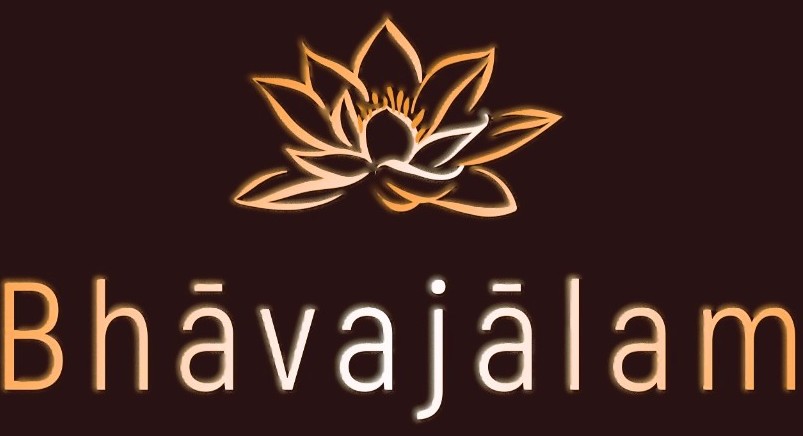Bhāvajālam
The word “Bhāvajālam” is a compound of the words “Bhāva” and “Jālam,” which means “The web of Bhāvas (Intentions, Existence, Atmans, States, Emotions, etc.),” or “The Group of Bhāvas,” or “The Illusions of Bhāvas.” If we explore this “Bhāvajālam,” we can say that everything in the universe will be explored and understood clearly.
In ancient Indian thought, this bhāva is discussed and described in many ways. Each Śāstra explores a particular dimension of ‘Bhāva.’ साहित्य deals in terms of “Emotions”; the ‘वेदान्त’, साङ्ख्य, and न्याय deal in terms of “Existence” and “Atman.” व्याकरण, मीमांसा deals in terms of “Intention and Action.” Without understanding the “intention dimension” and its manifestations, it is difficult to grasp other dimensions.
Thus, among so many meanings of Bhāva, taking the core meaning of "Intention", we will start the exploration. Bhāvas (intentions) can be manifested or expressed in the following ways:Manifestations of Intentions
Intentions (भावs) can be manifested or expressed in four main interconnected ways:
1. Gesture
Gesture encompasses the physical movements and visual signals employed to convey 'भाव', including systematic dance movements and sight.
2. Environment
The environment and surrounding contexts significantly shape how intention is manifested and perceived. The environment itself often communicates intent.
3. Sound
Sounds are an incredibly powerful and versatile medium for expressing intentions, divided into Linguistic sounds (like language) and Non-Linguistic sounds (like music).
4. Symbol
Symbol is a profound and abstract medium for expressing 'भाव' (intention). These include numbers, letters, shapes, and pictures/videos.
Explore →Expressing Bhāva: Difficulties
Although various methods for articulating (manifesting) Bhāva exist, we unfortunately face many difficulties in expressing it clearly. Despite its articulation, many are struggling to interpret it.
The reason for this is the inherent complexity and rigidity of Bhāva. Moreover, it is the "ultimate," "consciousness," "intelligence," and "existence." Bhāva encompasses all entities, both living and nonliving, as well as animate and inanimate forms.
The Mission & Vision
This website will explore the various dimensions of Bhāva. This understanding can help us understand other species, including trees, animals, and humans. We can make the world a better place for everyone if we understand each other.
We are currently focusing on "intention" and its manifestations. The Saṃskṛta-vyākaraṇa tradition discusses this manifestation in detail. Therefore, our focus is on that for now.
Why “Bhāvajālam”?
Bhāvajālam provides a unique exploration of Bhāva, benefiting Sanskrit students, linguists, and enthusiasts by connecting classical wisdom with modern understanding. It offers clear insights into the core dimensions of Bhāva, aiding scholars in their understanding of language, grammar, and philosophy.
Bhāvajālam connects ancient texts to modern relevance, empowering learners to engage with Sanskrit heritage and its application today.
Who is it for?
- For anyone who wants to understand Bhāva (intention) and its manifestations—the deeper meaning and feeling behind words.
- For students who are just starting to learn Saṃskṛta or who are taking it in school or college.
- For Saṃskṛta learners who want to investigate what words actually mean rather than just memorize words.
- For educators and language enthusiasts who wish to observe how Bhāva influences communication and grammar.
- For educators and students who are interested in the relevance of Indian knowledge systems to the modern world.
Courses
Understanding the language: Indian way
Learn Aṣṭādhyāyī-sūtras with Vārtikas with meanings
The background of Vyākaraṇa and the compilation of Aṣṭādhyāyī
An eagle view of Taddhita-pratyayas in Aṣṭādhyāyī
Webinars:
What is the significance of by hearting śabdās?
Tips for learning the Anvya of a Shloka
Dr. Rajeshwara Bhandaru studied in National Sanskrit University, Tirupati. He completed M.Phil (under Bra Shrii Prof. RLN Shastri Sir) and PhD (under Bra Shrii Prof. J Ramakrishna Sir) in Vyakarana.
He started learning Vyakarana under Bra Shrii Keshiraju Chandrasekhar and under Bra Shrii Kompella Satyanaraya. He studied the Vyakarana shaastra in traditional way under Bra Shrii Dendukuri Shriramachandra Sharma Somayaaji.
He worked for three years at the Samskrit Promotion Foundation at IIIT Hyderabad with Prof. Vineet Chaitanya and then for three years at Amrita Vishwa Vidyapeetham in Chennai.

